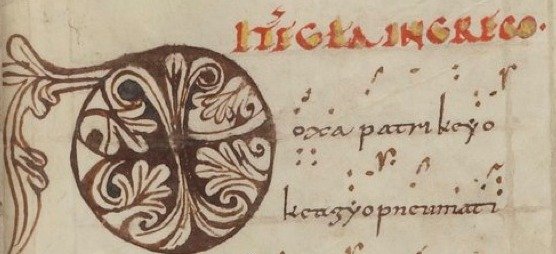
MISSA GRAECA
FWF-PROJECT P27115:
“Cultural Transfer of Music between Byzantium and the West”
Suddenly, at the end of the ninth century, chants with Greek instead of Latin text started to appear in Western manuscripts. Why did monks in the deepest middle ages decide to use this exotic language instead of well-known Latin?
The term "Missa graeca" is applied for the chants of the Roman "Ordinarium missae" (i.e. Δόξα/Gloria, Πιστεύω/Credo, Ἅγιος/Sanctus and Ἀμνὸς τοῦ θεοῦ/Agnus Dei). More than 60 codices of the 8th-14th cent. contain parts of the Missa graeca, of which approx. 48 are neumated. The chants can be found among others in psalters, grammars and various other collections, but mainly in musical manuscripts and here primarily in tropers and graduals dating from the tenth/eleventh centuries.
In medieval times the "Kyrie" does not belong to the Missa graeca, because it was already a fixed part of the Roman liturgy. It might have established itself when Greek was still the liturgical language in Rome. Therefore the Kyrie is not included among the chants of the Missa graeca in the relevant manuscripts and will not be considered in the present project either.
The medieval manuscripts themselves do not use this term, which established itself later for the Greek order of mass for the feast of Saint Dionysios from the thirteenth century onwards and will therefore also be used in the present project. In the manuscripts the Greek text can be found quite often together with the Latin one. These sections frequently bear the headline "Latine et Grece". Often there can also be found a Latin interlinear version or a Latin translation after each section.
Detailed information on the chants of the Missa Graeca can be found under the following link:


